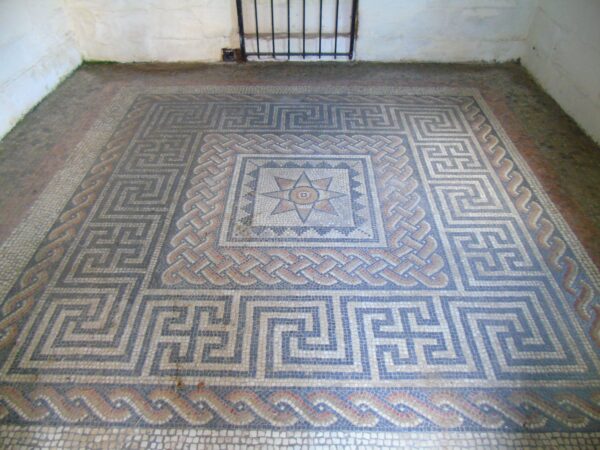
Thirty miles west of Malton is the small village of Aldborough. Nowadays few people will stop off as they race north along the A1 but, eighteen hundred years ago, this was the site of the important Roman town of Isurium Brigantum.
Isurium Brigantum was located at a key intersection between the Roman road of Dere street with the River Ure and was probably founded at the time of the Roman campaigns into Brigantia by Petillius Cerialis (see our Petillius Cerialis post). The Roman road leading out from the South-West gate of Malton fort (Porta Principalis Dextra) would have afforded direct connections to both York and Aldborough.
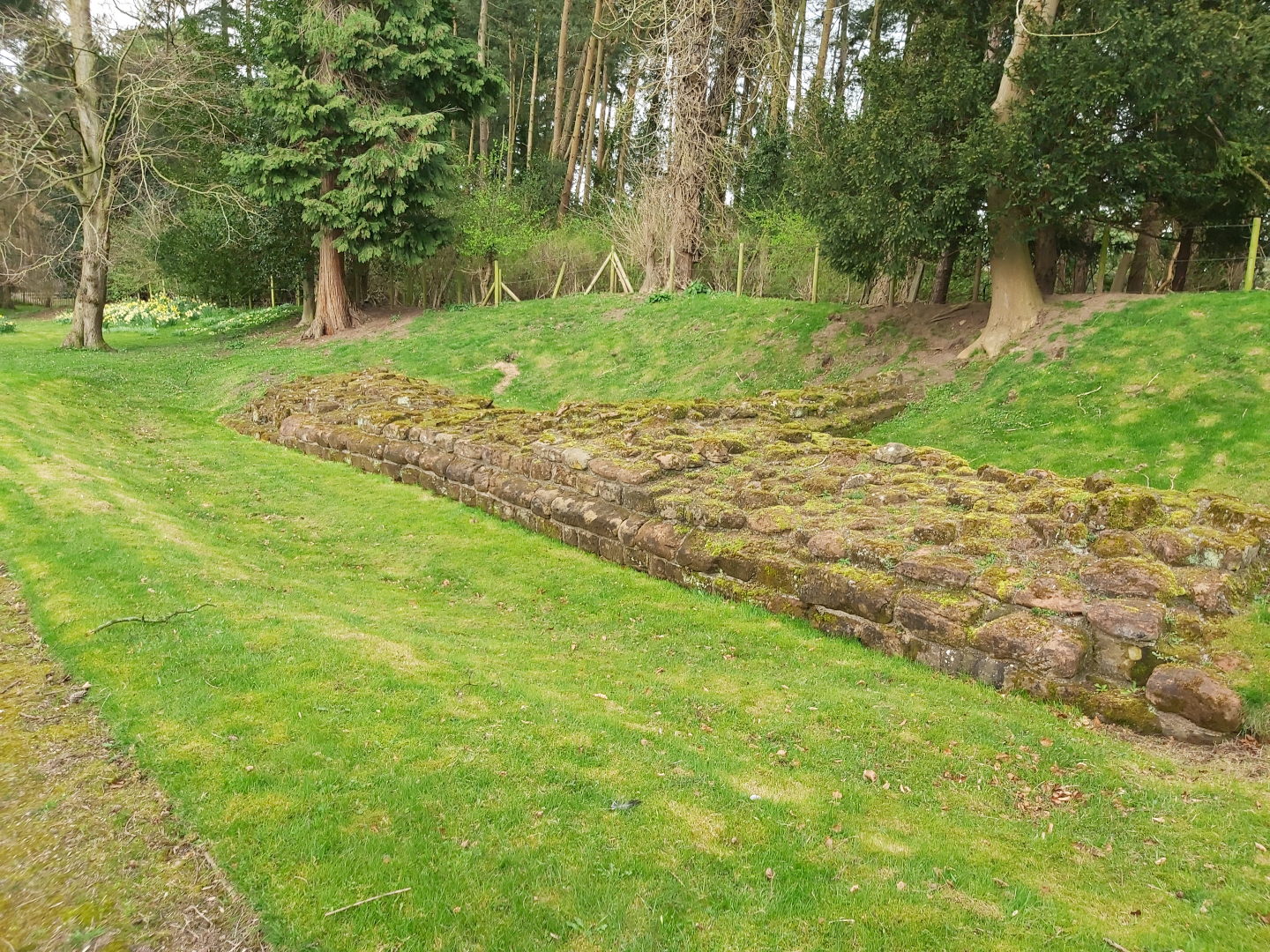
Traditionally it had been thought that Isurium was first constructed as a fort before becoming the administrative centre for the Romanised Brigantes. However recent work by Martin Millett and Rose Ferraby (University of Cambridge) is challenging this view.
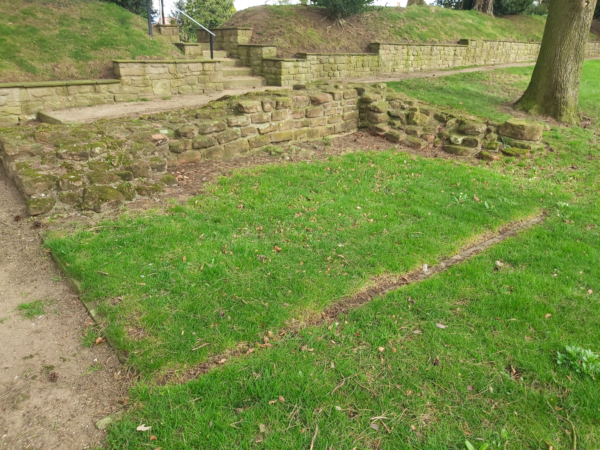
It now seems more likely that the Isurium started life as a smaller civilian settlement that initially prospered through supporting the early military campaigns across Yorkshire. Undoubtedly there would have been a close relationship with the nearby Roman fort at Roecliffe, but Isurium also served as an important location for those seeking accommodation, provisions or repairs as they headed further north.
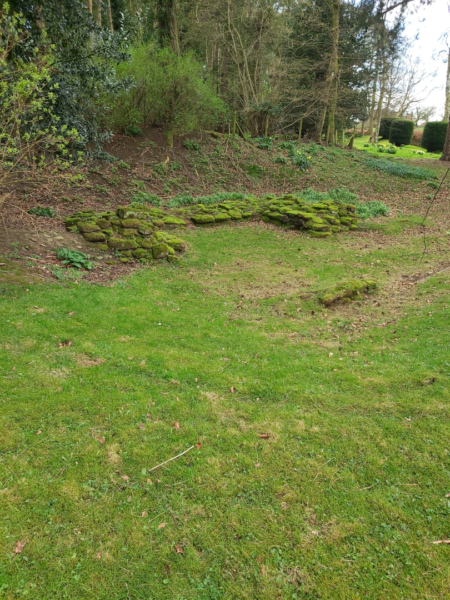
The Roman fort at Vindolanda (just south of Hadrian`s Wall) is renowned for the discovery of hundreds of postcard-sized wooden-leaf tablets covered in cursive Latin ink writing. They are a rich source of information about life on the northern frontier of Roman Britain during the late 1st century and one of them specifically mentions Isurium. This tablet itemises expenses for food, wine, grain, clothing, accommodation and carriage parts (axes carrarios).
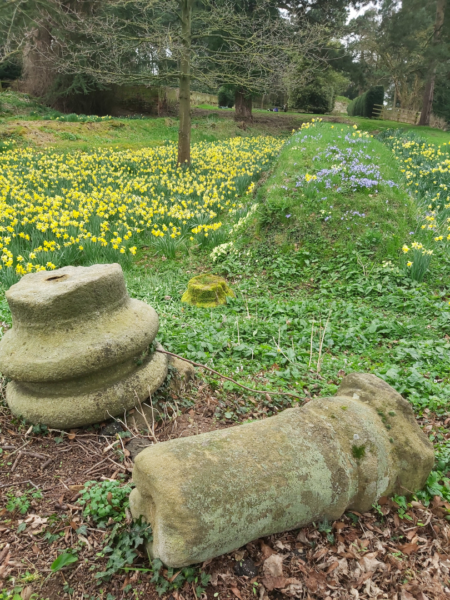
Subsequently, as Hadrian`s Wall was being built, Isurium developed into a planned civilian town with a street grid, becoming the official centre of the Brigantes tribe (termed a civitates). In common with other civitates – such as Wroxeter, Leicester, Silchester, Cirencester and Caerwent – several public buildings were constructed including a forum, basilica and bathhouse in addition to some grand private houses and possible temples. Like Silchester and Cirencester, Aldborough boasted sewers and an amphitheatre too. By the late second century the town was also surrounded by stone walls incorporating four principal gateways.
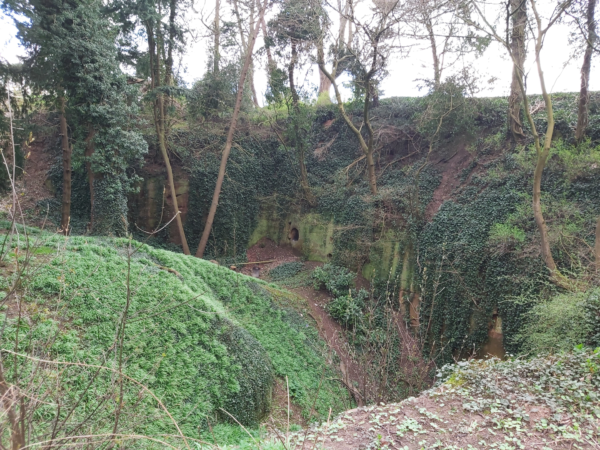
Today there is still much to see of Roman Aldborough including walls, mosaics and numerous finds. It is best to start a tour at the newly refurbished museum before exploring the southern stretch of defences, incorporating an interval tower and a corner tower (Figures 1, 2 and 3). The walls were constructed using sandstone blocks taken from the neighbouring quarries that can still be seen – probably the best-preserved Roman quarries within Great Britain (Figure 4).

Beyond the quarries a short walking route turns north following a Victorian promenade along the line of the Roman wall and beside a developing Roman garden feature. One of the particular delights of exploring Aldborough is coming across various architectural remenants lying around such as column bases and altars, presumably from grand public or private buildings (Figure 5). Evidence for the splendour of the Roman town houses is also provided by the mosaics housed in two small buildings in a nearby field (Figure 6). Another mosaic from Aldborough representing the wolf and twins can be viewed in Leeds City Museum.
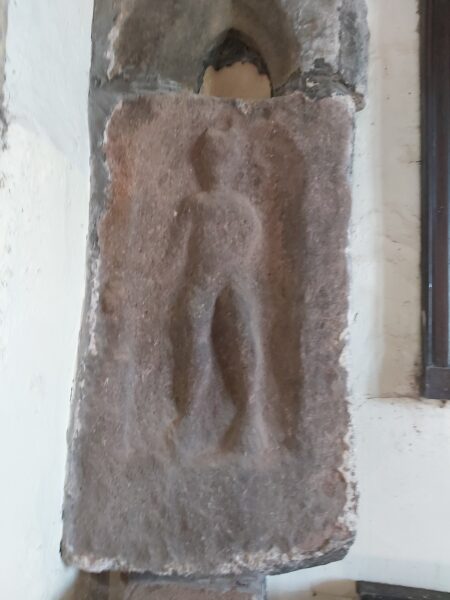
Before leaving Aldborough it is worth popping into the Church of St Andrew to examine the statue of the Roman god Mercury on the north-west wall that probably came from a nearby temple (Figure 7). The earth banks of the amphitheatre – one of the largest in Britain – can also be seen across the fields to the left as you head out of the village along the York Road.
Find out more about Aldborough from:
Figure 1: The town wall ©Nick Summerton
Figure 2: Interval tower ©Nick Summerton
Figure 3: Corner tower ©Nick Summerton
Figure 4: Quarry south-west of the Roman walls ©Nick Summerton
Figure 5: Column bases with a view south along the western ramparts towards the Roman garden and the Victorian Promenade ©Nick Summerton
Figure 6: Mosaic from a town house in situ ©Nick Summerton
Figure 7: Statue of the Roman god Mercury in the Church of St Andrew ©Nick Summerton
